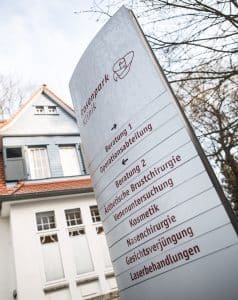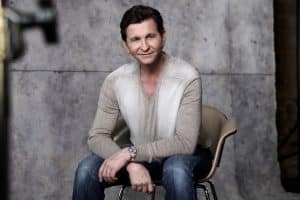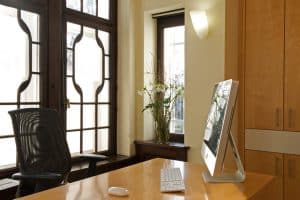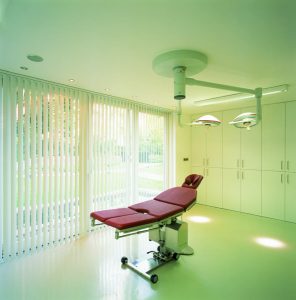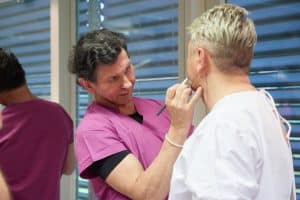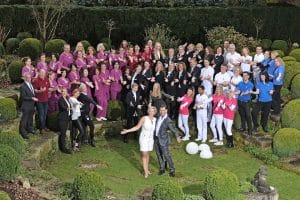Rosenpark Klinik – In the Center of Beauty
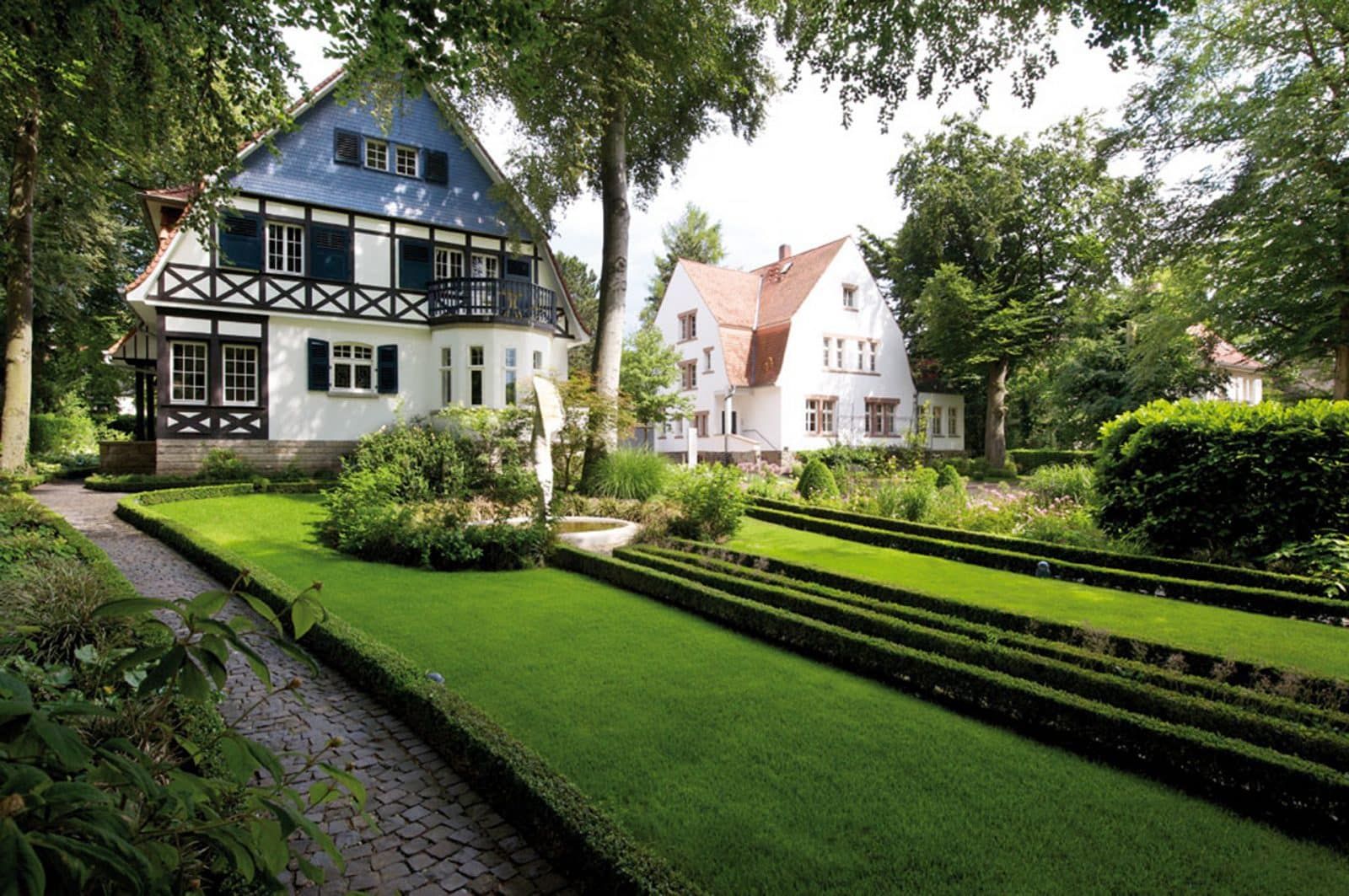
From Facial Rejuvenation to Body Shaping
20 years ago, doctors Gerhard and Sonja Sattler laid the foundation of the Rosenpark Klinik in a rose-covered half-timbered house in Darmstadt. Today, boasting up to 12 specialists, it has become a competence centre for aesthetic-operative dermatology and plastic surgery. In the C&C interview Dr. Gerhard Sattler:
What is your recipe for success?
If you consider the changes in aesthetic medicine over the past 20 years, there’s not one stone left standing. The scientific and philosophical bases have constantly and fundamentally changed. By this we mean the treatment of the aesthetic patient, the development of various methods and the importance of aesthetics in today’s Zeitgeist. To continuously and successfully develop a clinic over the course of more than two decades, one must actively participate in these changes as well as helping to shape them. For my wife and I this means that, in order to provide patients with the best treatment options, ongoing training, writing textbooks, organising scientific Congresses and running a scientific Research Centre must necessarily be part of the clinic’s day-to-day activities. New methods show a clear trend towards non-invasive and minimally invasive procedures. Through the constant improvement of treatment techniques, these are equivalent or even superior to the major surgical operations of the past. It must be borne in mind that today’s patients are generally very well-informed and come to their doctor with specific questions. And the aesthetic physician must never forget one thing: He advises and coaches his patients so that, in contrast to medicine in the treatment of illnesses. the patient can come to an informed decision about choices and types of treatment.
What distinguishes you from other Beauty Clinics?
First of all, it should be emphasized that at the Rosenpark Klinik , work with patients is, from the very outset, exclusively focused on aesthetic issues. This specialisation is essential to guarantee high quality treatment as well as the patent’s safety. Since the individual key areas of aesthetic medicine and surgery have become considerably less differentiated, it was necessary to form a group of specialized aesthetic physicians. On the one hand, this ensures discipline-specific specialisation and, on the other, a close interdisciplinary exchange. The business form of the Rosenpark Klinik is just as important to us. To this day, the clinic is in the sole hands of the founding physicians. This distinguishes it from other clinics that, due to the active involvement of investors, are more focused on commercial considerations. Our decisions are, therefore, based more on medical importance and less on economic optimization.
What range of treatments do you offer?
Our core competencies lie in body shaping and facial rejuvenation. For the face, preventive therapies protect the skin and subcutaneous fatty tissue from premature aging. Visible aging processes are treated with targeted measures to visually turn back time for the patient somewhat without making him look unnatural. The aim of the treatment is not to change, but to improve, without this being directly obvious to the patient’s social environment. With the body, the skin is toned using liposuction to bring the silhouette into proportion and thereby achieve a more attractive appearance. The female breast is another focal point. Enlargement, reduction, lifting and correction of anomalies are the most routine areas here. Another standard area is facial surgery, which is performed by an experienced plastic and aesthetic surgeon. Aesthetic corrections to the body would be inconceivable without Phlebology and, accordingly, the treatment of vein diseases is a further important area. In everything we do, we always strive to employ the best and most effective methods for the patient and not only the most recent.
What do you consider to be your personal supreme discipline?
That is a difficult question because I like treating faces with the patient’s own body fat or hyaluronic acid and botulinum just as much as I enjoy shaping the body with liposuction (fat removal). To date, I have performed over 14,000 liposuctions at the Rosenpark Klinik. That’s a lot, considering how complex and time-consuming it is! I must really have a profound passion for liposuction or I would have packed the suction cannula away years ago.
What do you do for the further training of your doctors?
The further training of our medical staff is the foundation for the Rosenpark Klinik’s efficiency and future security. For this reason, internal further education is ongoing. Several times a year we organise our own large international congresses with participants from all over the world. In addition, the clinic actively supports its doctors at every congress where they are giving lectures.
Do you organise your own Congresses as well?
Yes, we organise large international Congresses. The first live symposium took place while I was still employed as a senior physician in the Darmstadt Dermatology Clinic. In 1992 this was a very special innovative form of further education. Surgeries are transmitted live into a conference room, so that hundreds of doctors can observe the demonstration and participate in the parallel discussion at the same time. Up to now, this congress has taken place every alternate year. The next one in December 2018, with international speakers and surgeons, will be the 14th and over the course of four days, 40 to 70 operations will be shown.
Why did you become a physician, Dr Sattler?
If you choose to become a doctor, it is very likely that you suffer from a helper syndrome. When you think of a doctor without knowing him personally, you probably imagine that he must surely be an A-student, otherwise he couldn’t have studied. For me, the scenario was very different: I was a terrible student! For the longest time I had no idea what I should do professionally. Then I was diagnosed with a lymph gland disease. The commitment shown by my doctors made it clear to me that the medical profession was the only way forward. I consider myself very fortunate to be a practitioner. The intensive daily human contact with admirable people is still a privilege for me.
Please describe yourself in three phrases.
Lover of people and life. Addicted to harmony and happiness. An affinity for aesthetics and beauty.
How do you imagine the future of aesthetic medicine?
The market is continuously growing. The more mankind deals with the influence of mobility and progressively intensive communication, the more of a dynamic increase in the importance of the external appearance to today’s human being comes to the fore. I remember an encounter with a dentist about 30 years ago when I asked if I could have my teeth whitened. He shook his head in disbelief and asked if I seriously wanted to sacrifice my healthy tooth enamel just for a lighter colour. If we were to ask him the same question today, the answer would be: “Of course! We could do bleaching, but veneers or ceramic crowns would be better”. The most important thing for me is the fact that our social values system seems to take this switch in its stride. This means that the dentistry zeitgeist has taken a 180 degree turn. The same applies to attitudes towards aesthetic medicine and surgery, which are currently undergoing a change of heart as well. In the future, facial surgery with hyaluronic acid and botulinum toxin will simply be regarded as an intensified and most effective form of health care. No-one with any self-esteem will want to be accused of deliberately neglecting himself.
Which success do you like to remember?
There are many of them. Starting with the happiness of the woman who has been liberated from her genetically determined problem zones by liposuction. Or a single mother who is simply happy because her daughter enjoys taking her along on an evening out. Or the lipoedema patient who, after tripping over her swollen legs several times a day before being treated, can finally stay on her feet. Or the fatigue-worn face, which with the help of a few millilitres of hyaluronic acid looks normal, fresh and attractive again.
What have been the greatest achievements in aesthetics in recent years?
For me, this is the introduction of tumescent local anaesthesia. This special method of local anaesthesia has made many procedures safer for the patient as well as being very economical. Botulinum toxin is a milestone in medicine, as is the potency of the cross-linked hyaluronic acid, which is injected under the skin. The recently discovered and increasingly researched aesthetic anatomy is of great importance. It provides insights into how and in which places the face and body age. In this way, almost all treatment methods are being totally reinterpreted.
…and what are the biggest flops?
I believe that there are just as many flops as there are extraordinary achievements. After a long period of experience, a number of flops have, in the end, led to the development of valuable treatments as well. The problem is that medical technology companies and the pharmaceutical industry are forced to make profits. Often, devices and materials are introduced to the market too quickly.
Sponsored by Rosenpark Klinik

CultureAndCream Author from Munich
To travel during my profession as a beauty journalist was never enough for my. Also my six month on a world trip didn’t do it. It always attracts me to other cities, foreign countries, on roadtrips and places I don’t know yet. But I am not only interested in “culture” and “cream”, I am also fascinated by people who have stories to tell . Such unique experiences I want to share with you.
